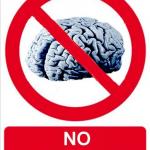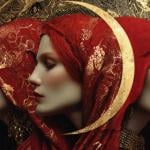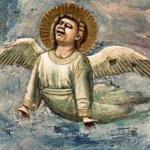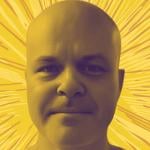Most everyone is familiar with the opening lines of Genesis, where we are told that “In the beginning . . . the earth was without form and void, and darkness was over the face of the deep.” Then God says, “Let there be light!” and creation gets rolling. It’s not at all difficult to conclude that, from the very start, God prefers light to darkness; a multitude of passages from scripture to come bear this out.
This seminal account of the interplay between light and darkness came to mind when I was on the exercise bike at the gym earlier this week. In a late February edition of The New Yorker, Adam Gopnik reviews The Darkness Manifesto by Swedish ecologist Johan Eklöf. Gopnik’s review, “Turn Off the Light,” asks “What’s lost when darkness becomes endangered? Eklöf is an expert in bats, a lover of darkness, and bemoans the ecological damage to innumerable species that human-caused light pollution has wrought across the planet.
I doubt I’ll be reading Eklöf’s book—it sounds too Scandinavian noirish to rise to the top of an already too tall pile of unread books in our library room. As often is the case with book reviews in The New Yorker, I found Gopnik’s review more interesting than the book he was reviewing. Toward the end of his review, Gopnik steps back and reflects on how the interplay and tension between light and darkness are woven into the fabric of humanity’s most compelling hopes and dreams.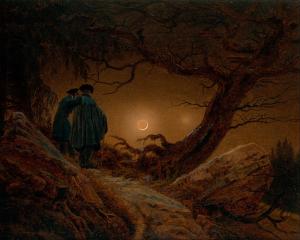
“More light!,” Goethe’s famous deathbed command, was the battle cry of the Enlightenment, which produced the progressive-minded science that eventually gave us the light bulb and the neon sign and the L.E.D. “Turn on the night!” still the essential cry of the Romantics, from Caspar David Friedrich to Kiss, urges us to love in darkness.
As is typical for me, I thought both of the opening lines of Genesis which place a divine stamp on light from the start and of the many apparently contrary biblical texts that shroud the divine in darkness. If God is light and in God there is no darkness at all (I Jn 1:5), then what’s going on in Exodus 20 when we read that Moses “approached the thick darkness where God was”?
I was raised in a specific version of Christianity, one that Barbara Brown Taylor describes in Learning to Walk in the Dark as “full solar spirituality”; solar spirituality
focuses on staying in the light of God around the clock, both absorbing and reflecting the sunny side of faith. You can usually recognize a full solar church by its emphasis on the benefits of faith, which include a sure sense of God’s presence, certainty of belief, divine guidance in all things, and reliable answers to prayer.
The fact that our fervent prayers often went unanswered and the presence of the divine was often undetectable didn’t matter—we were urged to live out a religious version of “Fake it ‘til you make it” because, after all, how can you not be happy when you have everything right and God is on your side?
Unfortunately, I was not gifted with a full solar personality. I am more of a lunar than a solar person, preferring the reflected light of Artemis and the moon to the solar splendor of her twin brother Apollo. Tolkien’s lunar elven queen Galadriel is my favorite character in The Lord of the Rings. And I found in Barbara Brown Taylor’s description of her own spiritual orientation something very familiar.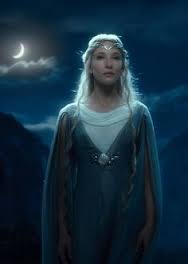
I have been given the gift of lunar spirituality, in which the divine light available to me waxes and wanes with the season. . . . All in all, the moon is a truer mirror for my soul than the sun that looks the same way every day.
I heard on NPR a while ago that on the eve of the conclave that would elect him as the next Pope, then Cardinal Jorge Mario Bergoglio urged his fellow cardinals to remember that Christians should live by the light of the moon rather than of the sun. Followers of Christ should reflect the source of light rather than acting as if they are the source. With regard to the hierarchy of the religious structure he would soon be elected to lead, he said that the church exists to reflect Christ—as soon as it believes it itself is the light, disaster occurs and the church becomes an idol. Preach it, Francis.
While there might be many reasons to fear the dark, times of darkness are part of being human and spiritual darkness is central to a search for the divine. The way many persons of faith talk about darkness, you would think that it came from a whole different deity, but as Barbara Brown Taylor reminds us, “to be human is to live by sunlight and moonlight, with anxiety and delight, admitting limits and transcending them, falling down and rising up.” I am reminded of the final lines of Randy Newman’s “I Think It’s Going to Rain Today”; words that shine a pale light into an often dark world: “Right before me, the signs implore me—Help the needy and show them the way. Human kindness is overflowing, and I think it’s going to rain today.”
At the end of his book review, Adam Gopnik provides a bit of advice.
The light of reason makes searchlights and lighthouses; the love of darkness asks us to adjust our eyes and egos sufficiently to see as owls do. Seek light in the morning; accept the night when it comes. Then call it a day.
It is typically human to “divide and conquer” to emphasize one side of apparent opposites to the disparagement and exclusion of the other. But light and darkness are both part of the package, both human and divine. Even God needs the evening and the morning to make a day.



